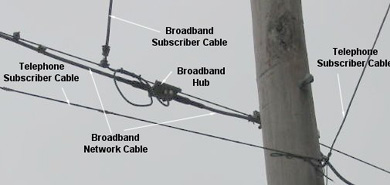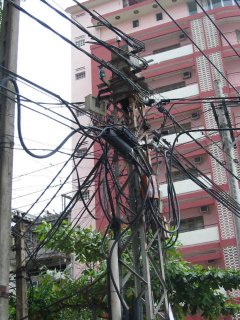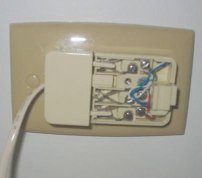
networking curriculum
support CD for senior
secondary studies
 networking >
connecting up
networking >
connecting up
Connecting up
A few years ago the treatment of this section would have been much simpler as the common network technologies were fairly consistent from site to site and well defined. However these days even consumers’ houses have connections that are vastly different from a few years ago. The photograph below is a high speed connection, alongside a telephone line in a Ballarat street.

Hopefully this mess found in a street in a major Asian city will not be our future. This was by no means an isolated case, nor the worst case observed and cause for thought concerning the deregulation of our telecommunications systems.

Modems have been a common experience for early home-based Internet adopters. The cabling required has been as simple as a telephone line with a two-line connection from the modem to the wall socket. Here is an older style connection, but still quite common, using a telephone wall socket. Only two wires are required, even though the modern RJ11 plugs and sockets provide 4 connectors.

:: Home |
History of Networking |
Why set up a Network? |
OSI Model |
Connecting up |
Protocols ::
:: Technology |
Types of Networks |
Topologies |
Issues |
Design Factors |
Economic effects ::
:: copyright |
credits |
sitemap ::
© 2003 Victorian Information Technology Teachers Association
h t t p : / / w w w . v i t t a . o r g . a u /
